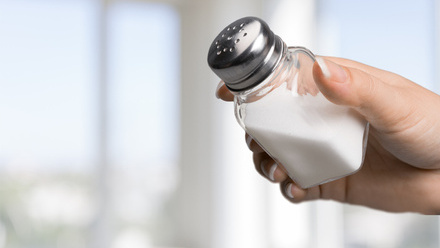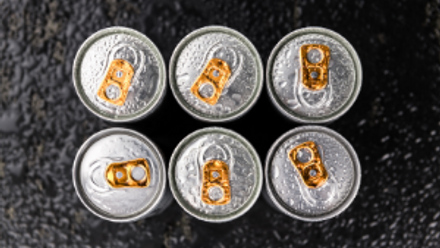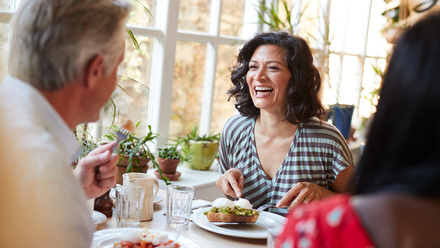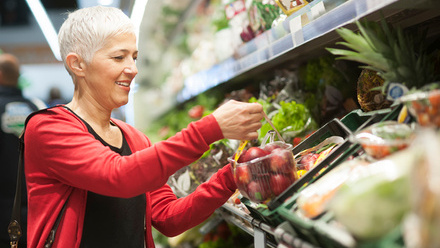What is coeliac disease?
Coeliac disease is an autoimmune condition. When someone with coeliac disease eats gluten, it causes the body’s immune system to attack and damage its own tissues. The tissues that can be damaged in this way include the lining of the intestine, particularly the finger-like villi. This often leads to nutrients from food not being absorbed properly.
Coeliac disease is different from food allergy or intolerance. The only treatment for coeliac disease is a strict, life-long, gluten-free diet. Gluten is a protein found in wheat, barley and rye. These cereals are commonly used in breads, pasta, breakfast cereals, cakes, biscuits and pastries.
Who does coeliac disease affect?
Coeliac disease is common and affects around one in 100 people. It can develop at any age from babies having their first foods right up to the elderly who may have eaten gluten with no problems for most of their life. There is a strong genetic aspect, with a 10 per cent chance of a first degree relative also having coeliac disease. However, we don’t yet know why some people develop coeliac disease and others don’t. Nearly half a million people in the UK are living with coeliac disease but are not yet diagnosed, which can be harmful to their health.
Symptoms of coeliac disease
Before treatment is started, people with coeliac disease may have one or several symptoms with differing levels of severity. Symptoms may include:
- diarrhoea
- abdominal bloating
- tooth enamel defects
- weight loss
- iron-deficiency anaemia
- mouth ulcers
- headache
- fatigue
Some people with coeliac disease may also suffer from anxiety, depression, constipation, tingling or numbness in hands, feet or limbs, problems with walking or balance, and infertility.
Some people with coeliac disease do not experience any symptoms when they eat gluten, although the damage gluten causes may still be occurring.
In addition, some people may develop a very sore, itchy, red rash that often shows up symmetrically on the limbs, back or scalp. This may be a condition called Dermatitis Herpetiformis and can be confirmed by a dermatologist. It is treated in the same way with a strict life-long gluten-free diet.
Diagnosis
If you think you may have coeliac disease you should visit your GP to have a blood test. It is important to keep gluten in your diet for at least one meal every day for six weeks before the blood test and until all tests are complete to ensure it is accurate. Some patients may need two blood tests and some may be referred to have a camera test, called an endoscopy, to confirm the diagnosis.
Treatment: a gluten-free diet
The only treatment for coeliac disease is a strict, life-long, gluten-free diet. Even very tiny amounts, less than a crumb of bread, can cause an immune response and potential damage to the body.
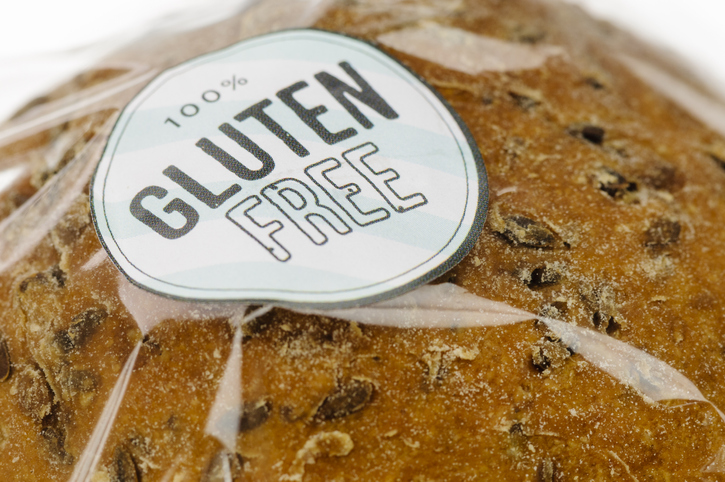
Removing all traces of gluten can be a daunting task, especially when you are first diagnosed. You will need to find out what foods contain gluten and how to ensure that your food is safe.
A dietitian can help by suggesting suitable foods, taking into account your food preferences. They can also help with reading food labels, provide ideas for avoiding all gluten at home and when out and about, and helping to ensure there is no cross contamination. A dietitian will also help you to include all the necessary nutrients such as energy, fibre, vitamins and minerals (such as calcium and iron) in your diet.
Lots of foods are naturally gluten free and can still be enjoyed on a gluten-free diet, see below:
|
Food group |
Naturally gluten-free, some examples |
|
Fruit and Vegetables |
All fresh, frozen and canned fruit and vegetables |
|
Starchy Carbohydrates |
Potatoes, rice, cassava, corn, millet, buckwheat, quinoa, teff, gluten-free oats |
|
Dairy foods and alternatives |
Milk, cheese, plain or fruit yoghurt (without toppings), soya milk, rice milk or nut milks |
|
Protein-rich foods |
Unprocessed meat, fish, beans, pulses, lentils, nuts, eggs |
Gluten is found in wheat, rye and barley, so avoid foods made with these cereal grains. Breads, pasta, breakfast cereals, cakes, biscuits, and pastries are usually made with wheat flour and contain gluten. These foods can be substituted with gluten-free products found in the free-from sections of the supermarket, including the freezer, chiller and bread shelves. These gluten-free foods often cost more. Some people will be able to get gluten-free food on prescription from their GP depending on local availability.
In the UK, for a food to be labelled ‘gluten free’ it must contain no more than 20 parts per million of gluten. This is the level of gluten which has been demonstrated to be safe for people with coeliac disease. Codex wheat starch (sometimes referred to as ‘gluten-free wheat starch’) is found in some gluten-free products. The gluten has been removed from this ingredient, so the product containing it is still safe to eat, if labelled as ‘gluten free’. Similarly, some products may contain barley malt extract - provided the product is labelled ‘gluten free’, it is also safe to eat.
The charity Coeliac UK has many helpful resources and apps to help you identify which foods are suitable to eat in all sections of the supermarket. The picture of Coeliac UK’s Crossed Grain symbol is also useful as a trusted sign that a packaged food is gluten free. Crossed Grain certified products have been through extra checks including gluten analysis certificates and independent audits of how they are manufactured to ensure people with coeliac disease can be confident these products are suitable for a gluten-free diet.
What is cross contamination?
Cross contamination occurs when gluten-free food comes into contact with gluten. For example, when sharing a toaster, crumbs from gluten-containing bread can touch and contaminate your gluten-free toast, making it unsafe to eat.
Oats are often contaminated with wheat, rye and barley during growing, harvesting and production. If you have coeliac disease it is essential you only eat oats that are labelled as gluten-free. A small proportion of people may be sensitive to oats and have symptoms when eating gluten-free oats. Discuss this with your dietitian if you think this is the case.
Top tips
- Gluten-free bread sometimes tastes better baked or toasted; try several products as they do differ. Companies may give a sample pack for newly diagnosed patients to try.
- Use a separate margarine, nut butter or jam to reduce risk of cross contamination.
- Try using a toaster pocket if you’re using a toaster that is also used to toast gluten-containing bread.
- Try to go for naturally gluten-free foods to reduce the impact of the higher cost of gluten-free products.
- Take snacks or a packed lunch if you are not sure if there will be gluten-free options when you are away from home.
- Look for gluten-free nights at fish and chip restaurants – this is often when they change the cooking oil to prevent cross contamination.
- For eating out, call ahead and ask questions about how your food will be prepared. This will help you identify if your meal is truly gluten free.
- For eating out, look out for the Coeliac UK GF accreditation - this means Coeliac UK have audited the venue's processes to ensure they meet the required standard to offer safe gluten-free food and ensures the staff have been trained to understand coeliac disease and the requirements of the gluten-free diet.
- Discuss your diagnosis with friends and family (or your child’s school if your child is affected) so they can support a gluten-free diet.
- Join supportive groups such as coeliac local support groups in your area, coeliac groups online or via social media to get support and more information on travelling, or recipe ideas.
Source(s)
- NICE 2015. Coeliac disease: recognition, assessment, and management. www.nice.org/guidance/ng20/ifp/chapter/Coeliac-disease
- European society paediatric gastroenterology, hepatology and nutrition guidelines for diagnosing coeliac disease 2020. Journal of Pediatric Gastroenterology and Nutrition 70: 141-156.
- Ludvigsson JF, Bai JC, Biagi F, et al. 2014 Diagnosis and management of adult coeliac disease: guidelines from the British Society of Gastroenterology. Gut doi:10.1136/gutjnl2013-306578.
- About coeliac disease [Internet]. Coeliac UK. 2022 [cited 4 May 2022]. Available from: https://www.coeliac.org.uk/information-and-support/coeliac-disease/about-coeliac-disease
- Patient information leaflet 2019, Dermatitis Herpetiformis, British Association Dermatology (BAD), UK. https://www.bad.org.uk/pils/dermatitis-herpetiformis-gluten-sensitivity/
- Food and Agriculture Organization of the United Nations; World Health Organization. Standard for foods for special dietary use for persons intolerant to gluten. Codex Stan 118-1979. Adopted in 1979. Amendment: 2015
- Barley malt vinegar and barley malt extract - suitable for a gluten free diet? [Internet]. Coeliac UK. 2022 [cited 4 May 2022]. Available from:https://www.coeliac.org.uk/blog/barley-malt-vinegar-and-barley-malt-extract/ [accessed 04/05/2022].
- Look out for our Crossed Grain symbol [Internet]. Coeliac UK. 2022 [cited 4 May 2022]. Available from:https://www.coeliac.org.uk/information-and-support/living-gluten-free/the-gluten-free-diet/food-shopping/look-out-for-our-crossed-grain-symbol/ [accessed 04/05/2022].
- Look for our GF symbol [Internet]. Coeliac UK. 2022 [cited 4 May 2022]. Available from: https://www.coeliac.org.uk/information-and-support/living-gluten-free/the-gluten-free-diet/eating-out/use-our-gf-accredited-symbol-to-help-you-choose-where-to-eat/ [accessed 04/05/2022].




